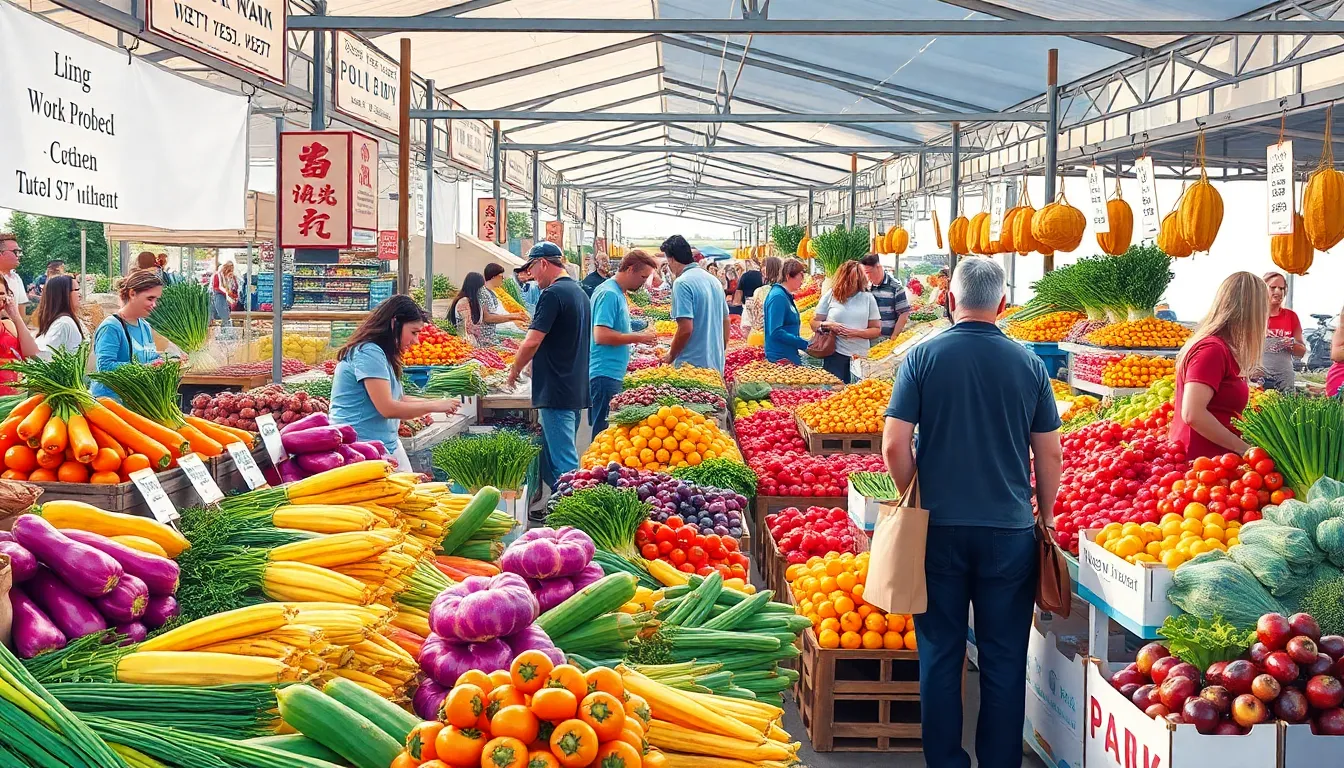Yumkugu Price Secrets: How to Get the Best Deals and Enhance Your Culinary Experience

In a world where prices can feel like a roller coaster ride, figuring out the yumkugu price is like hunting for hidden treasure. Whether you’re a seasoned enthusiast or a curious newbie, understanding the cost of this delightful delicacy can make all the difference in your culinary adventures. After all, who wouldn’t want to impress their friends with a gourmet dish while keeping their wallet happy?
Yumkugu Price
Yumkugu is a unique delicacy known for its distinct flavors and textures. Prices frequently fluctuate based on various factors, including availability and sourcing methods. Seasonal variations influence prices, as certain times of the year yield higher quality yumkugu, leading to increased costs. Factors such as regional demand and culinary trends also play significant roles in determining the market price.
Chefs and home cooks alike find value in understanding these price dynamics. Grasping the cost can facilitate smarter shopping choices, allowing culinary enthusiasts to budget effectively without compromising quality. For instance, purchasing yumkugu during peak seasons may result in more competitive prices. Choosing to source from local suppliers frequently leads to fresher and less expensive options.
Observing online marketplaces often yields additional insights into current pricing trends. Many suppliers provide real-time pricing data, enabling consumers to make informed decisions quickly. Experimenting with different suppliers can uncover variations in cost and quality, benefiting those committed to elevating their culinary creations.
Understanding the average price range proves crucial for anyone interested in exploring yumkugu in depth. Prices typically range from $15 to $50 per pound, depending on quality and source. Knowledge about various suppliers’ offerings can enhance purchasing strategies and foster an impressive culinary repertoire. With increased awareness of yumkugu pricing, culinary enthusiasts can enjoy this delicacy without overspending, allowing for a more pleasurable gastronomic experience.
Factors Affecting Yumkugu Price

Yumkugu prices fluctuate significantly based on various elements. Understanding these factors enables culinary enthusiasts to make informed purchasing choices.
Supply and Demand Dynamics
Supply and demand directly impact yumkugu pricing. Increased demand during culinary events or festivals often drives prices higher. Conversely, when supply exceeds demand, prices may lower. Local markets may experience higher demand due to consumer trends. This demand can create price spikes, especially if a specific dish gains popularity. Chefs and home cooks can take advantage of price variations by timing their purchases strategically.
Geographic Variations
Geographic location influences yumkugu pricing due to sourcing practices. Regions with abundant yumkugu production usually offer lower prices. Local suppliers often have fresher options at competitive rates. In contrast, areas lacking production might see increased transportation costs that elevate prices. Online marketplaces also reflect regional price differences based on availability. Observing these geographic variations helps consumers identify the best purchasing opportunities.
Current Yumkugu Price Trends
Yumkugu prices exhibit notable fluctuations influenced by various factors. Tracking these trends helps consumers make informed culinary choices.
Market Analysis
Market dynamics significantly impact yumkugu pricing. Supply and demand factors contribute to price variations, especially during culinary festivals when demand spikes. Checking online marketplaces reveals that prices typically range from $15 to $50 per pound. Local suppliers often provide fresher yumkugu, which can lead to better deals. Geographic production areas also affect pricing, with regions that produce abundantly offering more competitive rates.
Historical Price Comparisons
Analyzing historical prices shows how yumkugu costs have evolved. Over the past few years, prices increased during peak seasons due to escalating demand and limited supply. A comparison from previous years indicates that prices have risen by approximately 10-20% during significant events. Conversely, off-peak seasons often see prices drop as supply catches up with demand. Understanding these historical trends aids consumers in planning purchases for optimal pricing.
Where to Buy Yumkugu
Finding yumkugu involves exploring various purchasing avenues. Local grocery stores often carry it, especially during peak seasons. Farmers’ markets provide another option, offering fresher produce sourced directly from local suppliers. Chefs frequently opt for specialty food shops, where quality tends to be higher.
Online platforms also serve as valuable resources for buying yumkugu. Websites like Amazon and specialty food retailers list a range of prices, reflecting current market dynamics. Average prices commonly fall between $15 to $50 per pound, influenced by quality and source. Prioritize checking customer reviews and seller ratings to ensure a satisfactory purchase.
In addition to standard retail options, culinary festivals often showcase yumkugu, allowing food enthusiasts to purchase it directly from vendors. Attending these events can reveal unique varieties and special deals not available elsewhere. Seasonal promotions and bulk purchasing options frequently reduce overall expenses, especially during peak availability.
Local restaurants sometimes market yumkugu as a featured dish, providing another way to experience this delicacy without directly purchasing it. Observing dish prices in such establishments helps gauge market trends and potential personal buying decisions.
Understanding where to buy yumkugu ultimately makes for smarter culinary choices. By diversifying purchasing methods, consumers can enjoy fresher and more affordable options, ultimately enriching their culinary endeavors and optimizing their budget.
Tips for Buying Yumkugu
Understanding how to buy yumkugu effectively can enhance culinary experiences. Consider purchasing during peak seasons, as prices tend to be lower and quality higher. Buying directly from local suppliers often yields fresher product options. Chefs frequently select specialty shops for higher-quality yumkugu, ensuring better flavor and texture in dishes.
Exploring online marketplaces allows for price comparisons. Prices typically range from $15 to $50 per pound, influenced by quality and sourcing. Observing customer reviews and seller ratings on platforms such as Amazon helps ensure a satisfactory purchase. Searching for culinary festivals in the area presents another opportunity, as vendors may offer unique varieties with special deals.
Assessing local grocery stores and farmers’ markets can lead to unexpectedly good finds, especially during peak seasons. Restaurants that feature yumkugu dishes provide an excellent way to experience this delicacy without immediate purchase. Focusing on geographical availability often reveals that regions with abundant production offer the best prices.
Anticipating fluctuations during culinary events is essential, as demand increases and prices may rise accordingly. Seasonal variations create budgetary opportunities, so timing purchases wisely maximizes value. By diversifying sources and keeping informed about trends, culinary enthusiasts equip themselves for smarter shopping choices.
Navigating the Price Landscape of Yumkugu
Navigating the price landscape of yumkugu can significantly elevate culinary experiences. By understanding the factors influencing its cost, food enthusiasts can make savvy purchasing decisions. Timing purchases during peak seasons and exploring local suppliers often leads to fresher and more affordable options.
Staying informed about market dynamics and price fluctuations can help individuals budget effectively while maximizing flavor and quality. Whether sourcing from farmers’ markets, specialty shops, or online platforms, a strategic approach to buying yumkugu ensures that both seasoned chefs and newcomers can enjoy this exquisite delicacy without overspending.

 www Rapid HomeDirect .com: The Ultimate Destination for Home Goods
www Rapid HomeDirect .com: The Ultimate Destination for Home Goods  Explosion-Proof Fans for Chemical Plants, Refineries, and Oil Rigs
Explosion-Proof Fans for Chemical Plants, Refineries, and Oil Rigs  Protecting Your Home from Neighborhood Noise Pollution
Protecting Your Home from Neighborhood Noise Pollution